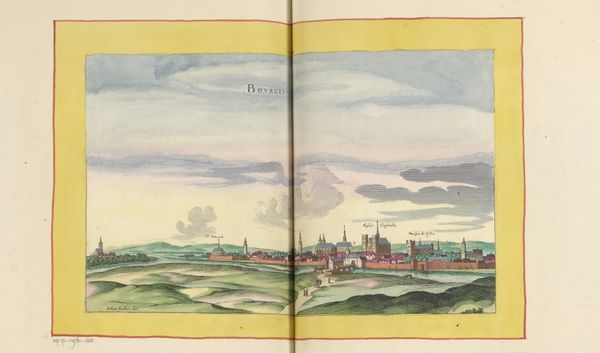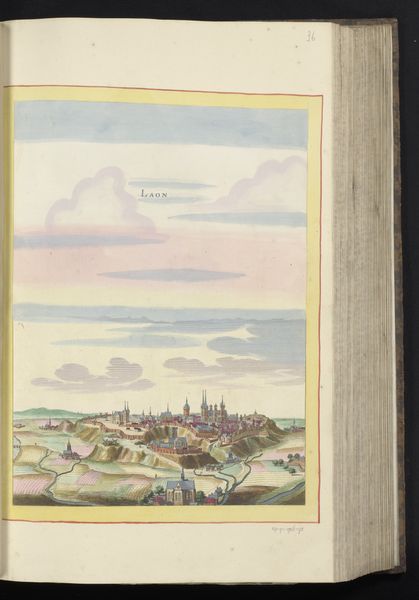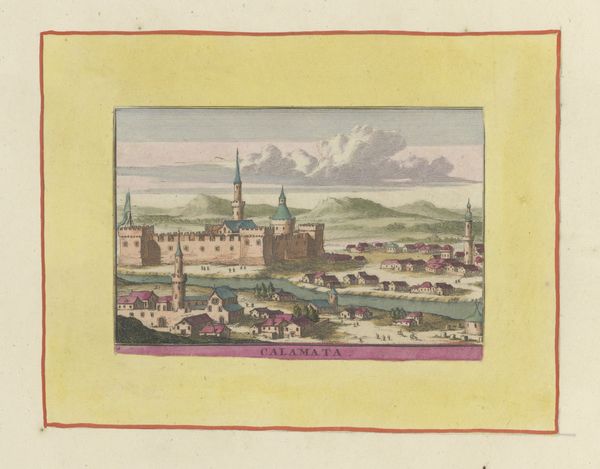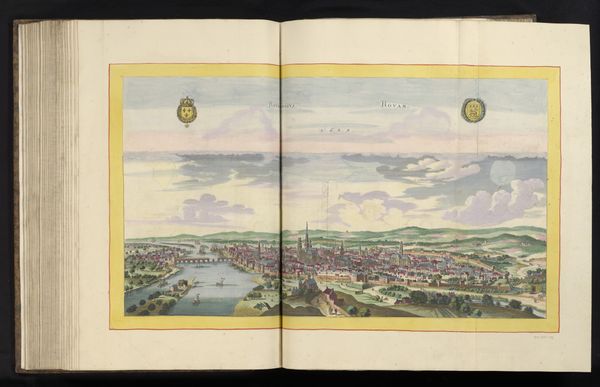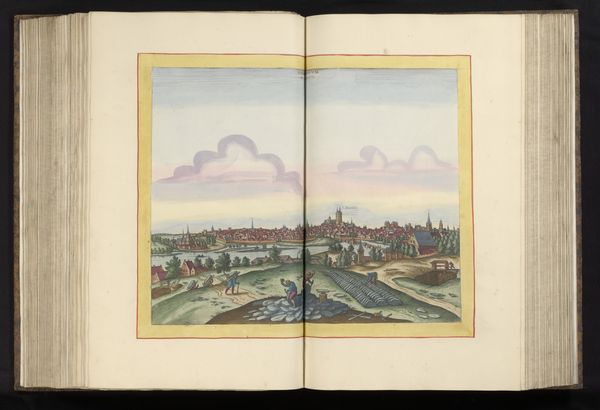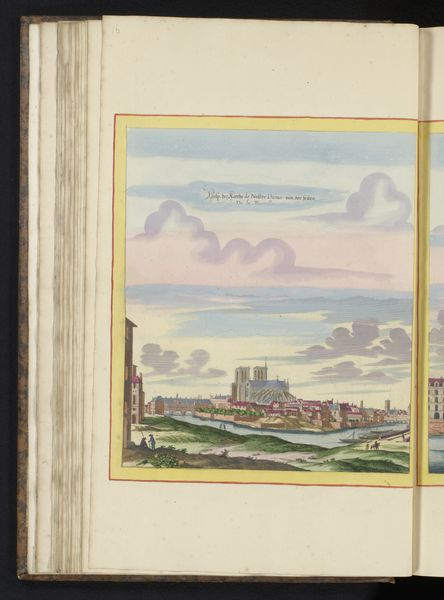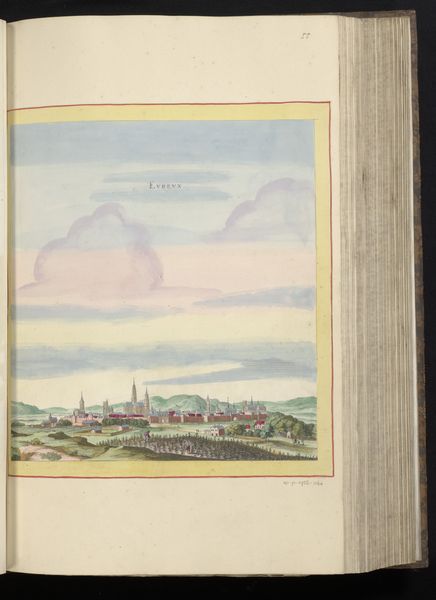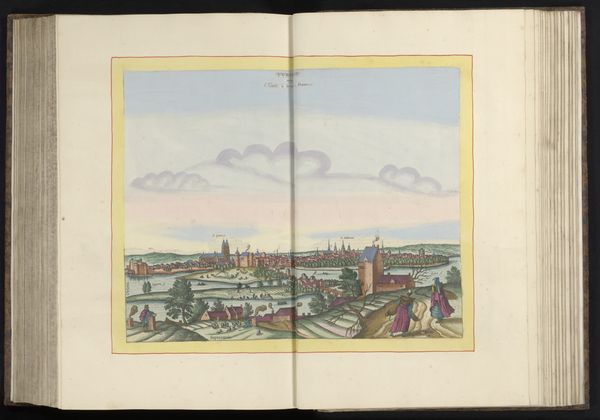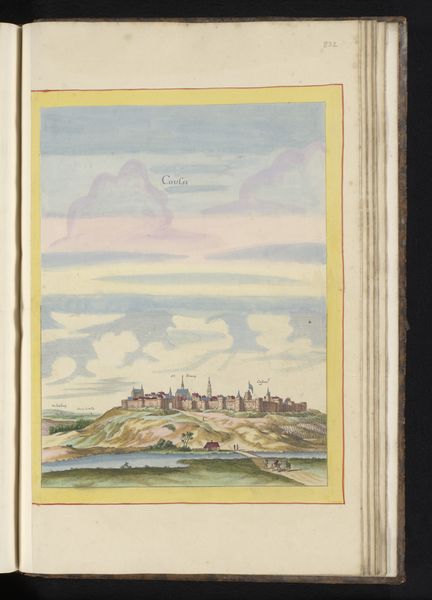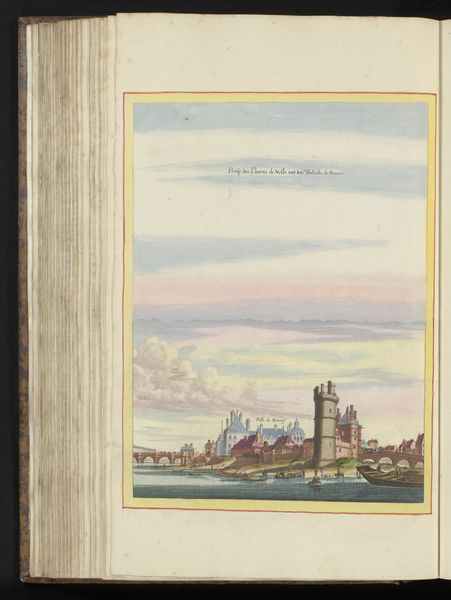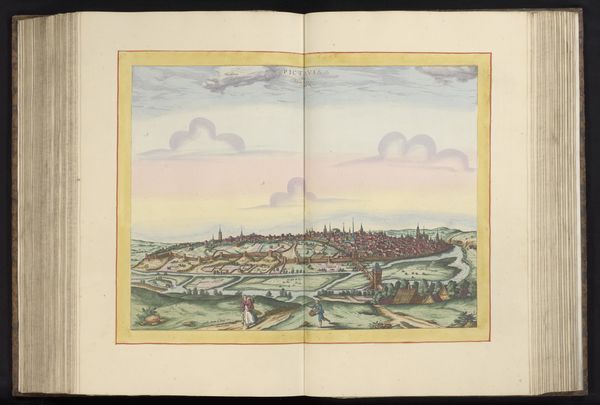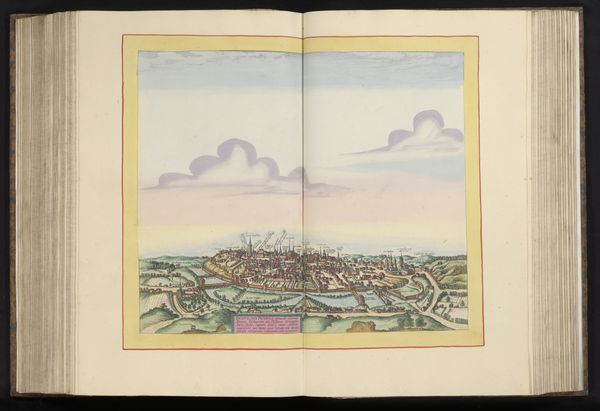
print, watercolor
#
dutch-golden-age
# print
#
landscape
#
watercolor
#
coloured pencil
#
cityscape
#
watercolor
Dimensions: height 179 mm, width 309 mm, height 532 mm, width 636 mm
Copyright: Rijks Museum: Open Domain
Editor: Here we have an exquisite bird’s-eye view titled ‘Gezicht op Boussac (Creuse)’, created anonymously around 1657. It appears to be watercolor on paper. There’s something so serene about its precise depiction; almost like a stage set for a tiny, historical drama. How do you interpret this work through a Formalist lens? Curator: What immediately strikes me is the artist's control over composition. Consider how the elevated viewpoint flattens the spatial recession, prioritizing the surface pattern. The lines delineating buildings and fortifications are sharp and controlled, contrasting beautifully with the softer, diffused washes representing the sky. Editor: I hadn't really noticed that contrast, I was too distracted by the framing device of the yellow border. Curator: The use of color contributes significantly to the image’s formal harmony. The palette is restricted, primarily employing earth tones for the landscape elements, punctuated by touches of muted red for the rooftops. The balance creates a structural unity. Notice the structural repetition with horizontal bands. Do you see that? Editor: I do. You mean how the sky echoes the ground by using light washes? It almost seems to be splitting the town apart, if that makes sense. Curator: Precisely. This splitting enhances the surface tension within the image; a push and pull which creates its unique visual dynamic. There is little suggestion of true depth or realistic detail. In what ways do these choices affect your reading? Editor: So, rather than simply seeing a historical town, the controlled execution, from its balanced structure and coloring, presents a crafted interpretation? Curator: Correct. The visual elements create a self-contained system where form takes precedence. The emotional distance invites reflection not on historical accuracy but the constructed image itself. Editor: I'm so accustomed to focusing on context, so seeing how all this control for lines, shapes, and balance makes for its own story feels insightful. Curator: Yes, it offers a valuable shift in how to examine art.
Comments
No comments
Be the first to comment and join the conversation on the ultimate creative platform.
